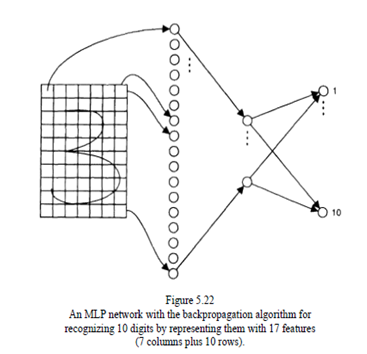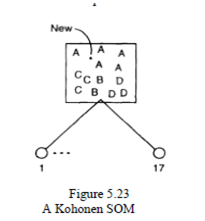SKEDSOFT
Introduction:-Both supervised and unsupervised learning in neural networks have been used for pattern recognition and classification.
The steps to follow when creating a connectionist model for solving the problem are to define
(1) The set of features to be used as input variables, and
(2) The neural network structure and the learning and validation methods.
A crucial point in using neural networks for pattern recognition is choosing the set of features X = {x1, x2,...,xn} which should represent unambiguously all the patterns from a given set P = {p1, p2, ...,pm}, In a simple case, the task of character recognition, some methods use the values of the pixel from a grid where the pattern is projected. Other methods use other features: lines, curves, the angle which a drawing hand makes with the horizontal axis, picked up at some points etc. Some preprocessing operations may be needed to make the recognition scale-invariant, translation-invariant, and rotation-invariant. Preprocessing is a crucial task in pattern recognition.
For the task of recognizing ambiguous, noisy, and ill-defined patterns, it is not recommended that primary signal elements be used, such as temporal samples of speech, waveforms, or the pixel of an image, etc.
Instead of using pixels as features, the patterns can be represented by fewer features. A set of features could be a set of (Nc Nr)features, where Nc is the number of the columns in the grid and Nr is the number of rows. A value for the feature Ni for a given pattern is the number of cells in the ithrow (column) crossed by the pattern. Figure 5.22 shows an MLP trained with the backpropagation algorithm for recognizing 10 digits in this way.

A system that recognizes ZIP codes was developed with the use of a five-layered MLP and the backpropagation algorithm. It was implemented on an electronic chip. The learning set consists of 7291 handwritten digits and 2549 printed digits in 35 different fonts. Other application areas for connectionist handwritten character recognition are banking, fraud detection, automated cartography, automatic data entry, and so forth. SOM and LVQ algorithms have been successfully applied to pattern recognition tasks. The training algorithm places similar input patterns into topologically close neurons on the output map.
When compared with statistical methods, connectionist methods for pattern recognition and classification have several advantages when:
- A large number of attributes (features) describe the input data and the interdependencies between them are not known.
- Irrelevant, contradictory, or ambiguous instances are present in the data set.
- Noise is present in the input data.
- Underlying distributions are unknown.